
Preface
Five years have now passed since the Great East Japan Earthquake and the Fukushima Daiichi Nuclear Power Station accident of March 11th, 2011. I would like to extend my deepest sympathy and solidarity to the victims of the earthquake disaster, and to those who were forced to seek shelter elsewhere after the accident. This booklet contains an English translation of the questions that readers found particularly interesting from a Q&A series on Radiation and Radioactive Materials, published in the local Fukushima newspaper Fukushima Minpo from December of 2011 to October of 2013. The aim of presenting this information is to enrich the readers' understanding of the various issues related to radiation.
Noboru Takamura
Professor
Nagasaki University
CONTENTS
Radiation Exposure and The Thyroid Gland
Food Safety and Radiation
About Fukushima Health Management Survey
What is the difference between radioactive material and radiation?
Terms like "radioactive material," "radioactivity," and "radiation" are being used almost daily in newspaper articles. Although we have a rough understanding of what they mean, please explain what their main properties are.
A material or substance that emits radiation is a radioactive material, and radioactivity refers to the strength of radiation.
Materials or substances that emit radiation, such as radioactive iodine and radioactive cesium, are known as radioactive materials.
Radioactivity refers to the energy in radioactive materials that emits radiation. Radioactivity is measured in becquerels (Bq). Reference values for radioactivity in food are measured in becquerels/kilogram (Bq/kg), denoting the amount of radioactivity contained in 1 kg of food.
The radiation emitted by radioactive materials may include small particles, such as alpha rays or beta rays, as well as rays featuring waveforms, such as gamma rays and X-rays. The effect of this radiation on the human body is measured in Sv.
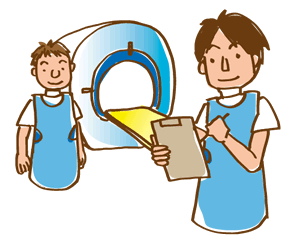
1 millisievert (mSv) and 1 microsievert (μSv) correspond to one thousandth and one millionth of a sievert (Sv), respectively. Whether you are dealing with man-made radioactive materials or those that exist naturally in the world, the type of radiation emitted in both cases is the same. Just because the radioactive materials that were scattered by the nuclear power plant disaster were man-made, it does not mean that the type of radiation generated was different in any way.
On the other hand, we know that the power of permeation varies depending on the type of radiation. For example, although you can stop alpha rays (be shielded from them) using a sheet of paper, this is not the case with beta rays. Beta rays can be stopped with a thin sheet of aluminum. The radiologists and other doctors who carry out X-ray examinations in hospitals wear aprons containing lead, in order to shield themselves from X-rays and minimize their exposure to radiation.
What is the half-life of radioactive materials?
When talking about radiation, we often hear the term "half-life." Does this term describe how certain radioactive materials end up in a particular condition? Also, please explain why radioactive materials emit radiation in the first place.
The term "half-life" refers to the amount of time required for radioactive materials to change and be reduced by half.
Just as the word itself suggests, this term denotes the amount of time required for radioactive materials, such as radioactive iodine and radioactive cesium, to be reduced by half of what they were originally.
Radioactive materials have unstable structures. However, they go through a process of seeking stability, and it is this process that causes the emission of radiation. For example, iodine-131, one type of radioactive iodine, emits beta ray and gamma ray radiation, but it ultimately transforms itself into a chemical element called xenon. Even in gas form, xenon does not emit radiation. Iodine-131, with a half-life of approximately eight days, emits radiation, and after approximately eight days, half of it turns into xenon. In other words, the half-life refers to the amount of time that radioactive materials emit radiation before becoming a stable substance. This is what is known as the "physical half-life." Now that a year has passed since the nuclear accident, so there is no danger of detecting radioactive iodine within the prefecture.
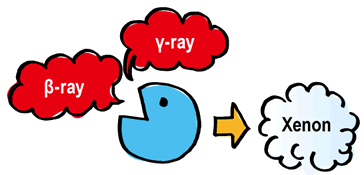
On the other hand, we are currently faced with problems related to radioactive cesium, which has a half-life of approximately two years for cesium-134 and 30 years for cesium-137. However, this does not mean that, if radioactive cesium gets inside the body, it would take 30 years for its quantity to be reduced by half. In this case, it would take around two months for infants, and about three months for adults, for the amount of cesium in the body to be cut down by half. This is because the human body is constantly regenerating itself, and when this happens the cesium is expelled from the body. This is what is known as a "biological half-life." It is always important to make a distinction between a substance's physical half-life and its biological half-life.
What types of radiation exist in nature?
Apart from the radioactive materials scattered by incidents such as the Fukushima Daiichi nuclear power plant accident, we have heard that radiation also exists in the natural world. Please explain, what types of radioactive materials are there, and what sort of radiation doses do they emit?
Around the world, there is a fixed amount of radiation on the ground, and some areas are even exposed to as much as 10 mSv per year.
During a typical person's lifetime on the surface of the Earth, he or she is exposed to approximately 0.3 mSv of external radiation per year. This radiation comes down from space (known as "space radiation").
In addition, the ground around the world contains a fixed amount of radioactive materials, which are completely unrelated to nuclear power plant accidents. People have always been, and will always be, exposed to the external radiation emitted by these materials. Similarly, wherever you go, the water and food that you eat every day contain minuscule amounts of radioactive materials; therefore, with some foods, people also end up being exposed to internal radiation. For example, greenish yellow vegetables and bananas, potatoes, and other foods contain large amounts of potassium, and that potassium contains the radioactive material potassium-40, albeit in extremely small quantities.

In Japan, the amount of radiation that people are exposed to in nature (natural radiation) is approximately 2.5 mSv per year, whereas the world average is approximately 3.0 mSv.
We also know that there are places in the world with environments showing comparatively higher radiation doses. For example, the region along the Kerala coast, in Southern India, is said to be subject to a relatively high dose of radiation due to the effect of the naturally radioactive materials that get washed up on the shore from the sea.
In that area, people are exposed to over 10 mSv per year. Simply put, if you were to live along the Kerala coast for 10 years, you would be exposed to 100 mSv. However, research carried out in the region has shown that the percentage of leukemia and cancer sufferers among the inhabitants is no different than those found in other regions of India.
What is the difference between an atomic bomb and a nuclear power plant incident?
Many victims suffered as a result of the atomic bombs dropped on Hiroshima and Nagasaki. During the more recent Tepco Fukushima Daiichi nuclear power plant accident, large amounts of radioactive materials were released. Our concern is whether the damaging effects of this incident could be the same as those of the atomic bombs. What is the difference between an atomic bomb and a nuclear power plant accident?
The difference between the release of an atomic bomb and a nuclear power plant accident lies in the types of diseases that result from exposure to these materials. This difference stems from whether people were subject to external or internal exposure.
The effects of radiation from an atomic bomb are primarily caused by external exposure. An atomic bomb emits large amounts of radiation all at once through nuclear fission. In Hiroshima and Nagasaki, this caused many victims to be subject to high doses of external exposure, causing them to suffer acute radiation effects, and developing leukemia or solid tumors a few years to a few decades later.
On the other hand, the Chernobyl nuclear power plant accident released a large amount of radioactive materials, particularly radioactive iodine, which caused inhabitants of the vicinity to be exposed to internal radiation. Radioactive iodine is particularly prone to accumulation in the thyroid gland, so this caused an increase in thyroid cancer a few years later, particularly in children who had consumed contaminated milk and other foods.
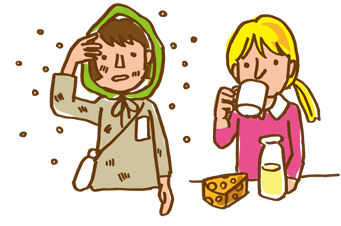
To date, apart from leukemia and thyroid cancer, there have been no confirmed increases in cases of solid tumors in the Chernobyl area. Although it is still necessary to continue doing research into this, the difference between Hiroshima, Nagasaki, and Chernobyl, in terms of the types of diseases with increased cases, lies in whether the exposure to radiation was external or internal.
The problem posed to the local inhabitants by both the radioactive iodine and radioactive cesium released by the accident at Fukushima Daiichi Nuclear Power Plant is the risk of internal radiation exposure. Because of this, and based on lessons learned from the Chernobyl nuclear power plant disaster, Japan set provisional reference values for radioactive iodine and radioactive cesium immediately after the accident took place. Any food or water that exceeded those reference values was subject to shipping and consumption restrictions, thereby minimizing the internal radiation exposure caused by the consumption of contaminated food.
In terms of radiation exposure, what is the difference between adults and children?
We have heard that the effect of radiation exposure is much greater in children than in adults. What are the actual differences found in exposure of adults and children? Please provide concrete symptoms from past cases.
Children are highly sensitive to radiation. It is necessary to provide standards and minimize risk.
Due to the accident at the Chernobyl Nuclear Power Plant, large amounts of radioactive materials, particularly radioactive iodine were released, causing the inhabitants of the vicinity to be exposed to internal radiation, thereby instigating an increase in thyroid cancers a few years later. We know that many of the cases of thyroid cancer found in Chernobyl appeared in people who had been children at the time of the accident.
In general, we know that the effects of radiation are more marked in actively proliferating cells, tissues, and organisms. This is what is known as "sensitivity to radiation."
Bone marrow is a tissue located on the back of the body that goes through a constant process of cell division to produce blood cells, such as red blood cells and white blood cells. In Hiroshima and Nagasaki, the bone marrows of the atomic bomb victims were subject to high doses of external exposure, causing an increase in cases of leukemia, a cancer of the blood.
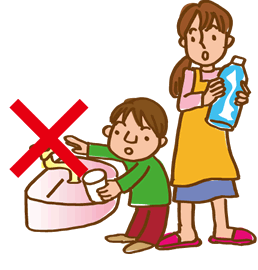
Based on this, we can say that bone marrow is an internal organ with a high sensitivity to radiation. However, with the dose ratios currently found in the air of residential areas in the prefecture, it is unlikely that any risk of internal radiation exposure exists there, even in children. On the other hand, many cases of thyroid cancer were found among people who were children at the time of the Chernobyl disaster. One of the reasons for this is that, compared to adults, children are much more sensitive to radiation.
Immediately after the nuclear power plant accident in March 2011, provisional reference values were set in the prefecture for radioactive iodine and radioactive cesium. Any food or water that exceeded those reference values was subject to shipping and consumption restrictions. Based on the experience of Chernobyl, this was implemented as a key measure to minimize children's internal exposure to radiation, since they are particularly sensitive to it.
What is a whole body counter?
The prefecture has been measuring levels of internal radiation exposure by using whole body counters. However, many municipalities have also introduced them on their own, in order to take measurements of their inhabitants. How do they differ from dosimeters? Please provide an explanation about this measuring device.
A whole body counter measures the concentration of substances inside the body, and then uses those values as the basis for calculating the total amount of radiation present.
Pocket dosimeters and integrated dosimeter badges can measure doses of external exposure, but not internal exposure. One method for assessing doses of internal radiation exposure is using a whole body counter.
The whole body counter takes advantage of the fact different types of radioactive materials have different radiation wavelengths. The device measures the concentration of radioactive materials inside the body, and uses those figures as a basis for measuring the doses of internal exposure.
When radioactive cesium gets inside the body, it emits beta rays and gamma rays. The gamma rays then permeate the body, and at that point the device measures the amount that is emitted outside the body. Based on these figures, the counter measures the concentration of radioactive cesium inside the body to calculate the doses of internal exposure.
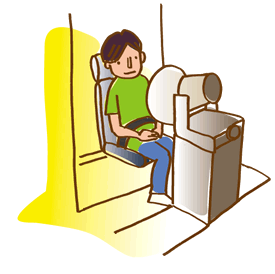
Since the accident of March 2011, whole body counters have been introduced within the prefecture, and measurements have been taken regularly since then. However, if we look at the values measured to date, the concentrations of radioactive cesium inside people's bodies has been relatively low, so the actual doses of internal exposure within the body cannot be considered to be harmful to people's health. Immediately after the accident, provisional reference values were set in order to place restrictions on the consumption of contaminated foods; it is believed that this measure is the reason for the decrease in the levels of internal radiation exposure.
Similar to other medical devices and dosimeters, whole body counters can present slight differences in accuracy, depending on the type of device used, causing a potential scattering of results. This effect is currently considered to be a problem; however, this dispersion of results is only observed when measuring radioactive materials with extremely low concentrations of radiation. This means that there is no chance that doses strong enough to have detrimental health effects could remain undetected.
What is the effect of radioactive iodine?
We have heard that after the Chernobyl accident, there was an increase in cases of thyroid cancer among the inhabitants in the vicinity of the power plant. Even with the Tepco Fukushima Daiichi accident, it looks like there was a scattering of radioactive iodine, which is known to cause thyroid cancer. Are people safe?
Restrictions were placed on the consumption of food and drink, so an increase in cases of thyroid cancer is unlikely.
After the Chernobyl accident, large amounts of radioactive materials were spread over a wide area. We know that the scattered radioactive materials were primarily radioactive iodine and radioactive cesium. Between the two, radioactive iodine is the most likely to accumulate in the thyroid gland after entering the body. This is because the thyroid is an internal organ that secretes hormones, and these hormones are composed of iodine.
With the Chernobyl accident, the radiation (beta rays and gamma rays) that emanated from the radioactive iodine penetrated people's thyroid glands, causing them to become exposed. It is believed that this internal exposure caused the increase in thyroid cancer among the inhabitants living in the vicinity of the Chernobyl plant.

After the accident in Chernobyl, no consumption or distribution restrictions were put in place with regard to food and drinks (milk in particular) that had been contaminated with radioactive iodine. We now know that the inhabitants of the area who consumed large amounts of these contaminated items suffered from internal exposure to radiation.
Based on the experience of Chernobyl, this measure was implemented in order to minimize, as much as possible, any internal radiation exposure caused by the consumption of contaminated foods. Because of this, unlike the incident at Chernobyl, an increase in cases of thyroid cancer within the prefecture is thought to be unlikely.
What is the effect of radiation on future babies?
Because we live in a prefecture with ambient radiation doses that are higher than normal, we are extremely concerned as to whether it would be safe to become pregnant and give birth to babies just like before. Would future children be affected by radiation? Also, what about the case of women who are already pregnant?
At the current doses, there is no need for concern. There have been no reports of any possible hereditary effects.
In the case of the victims of the Hiroshima and Nagasaki atomic bombs, there were reports of an increase in cases of microcephaly in the babies of women who were exposed to high doses of radiation in the early stages of their pregnancies. However, this condition only actually manifested itself in embryos that were exposed to extremely high doses of over 200 mGy*. This is a completely different scenario from the one currently experienced by the prefecture.
The International Commission on Radiation Protection (ICRP), an international organization that sets international guidelines on radiation, has issued the following recommendation: "Embryos exposed to doses of less than 100 mGy must not be considered as a reason for having a termination."
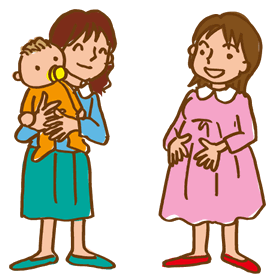
This advice was decided based on research carried out on the atomic bomb victims of Hiroshima and Nagasaki. This means that there is no need to worry about babies who have been exposed to less than 100 mGy of radiation. From the time of the nuclear power accident to the present day, it is unlikely that a baby of a pregnant woman living in the prefecture could have been exposed to more than 100 mGy of radiation.
In addition, people may have concerns about the hereditary effects on children who will be born in the future. However, even considering the hereditary effects on the atomic bomb victims of Hiroshima and Nagasaki (research carried out on the second generation), there have been no reports of an increase in cases of cancer, leukemia, or other similar diseases. The current radiation doses observed in the prefecture are much lower, hence people should feel at ease about becoming pregnant and giving birth.
* mGy (Milligray)
An absorbed dose of radiation. For the radiation emitted by radioactive iodine and radioactive cesium (beta rays and gamma rays), 1 mGy is equal to 1 mSv.
What is meant by the baseline of 1 mSv?
According to the health screening survey of prefecture residents conducted in late February 2012, 58% of residents were exposed to an amount of radiation estimated to be less than 1 mSv per year. What is meant by 1 mSv, which is often cited as a baseline, and what are the health implications for this level?
If one gene in a cell is damaged, it can be repaired in a short time, and there is no residual effect.
The International Commission on Radiological Protection (ICRP) suggests the public's maximum allowable amount of yearly exposure to radiation to be under 1 mSv.
Following radiation accidents of this nature, the ICRP recommends constraining, to the greatest extent possible, radiation exposure to the low end of a yearly range, between 20 and 100 mSv. After the accident site returns to normal, that threshold should be gradually lowered to between 1 and 20 mSv.
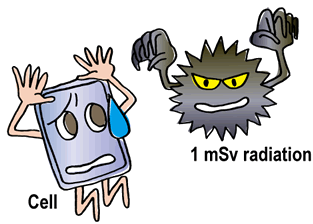
The ICRP recommendation, and others like it, is based on the calculation that exposure to more than 100 mSv per year would pose an increased health risk in the form of cancer and other issues; they encourage the avoidance of radiation exposure under normal circumstances to be as little as possible, and under 100 mSv in the event of a radiation accident. These figures are based on the idea of curbing radiation exposure to the most rational extent possible within the given circumstances. As for 1 mSv, what does it mean, exactly?
As is often discussed, when a human cell is exposed to 1 mSv of radiation, one gene in the cellular material is damaged. However, that damage doses not have an immediate effect on health. Human cells have the inborn ability to repair damaged genetic material.
When a gene is damaged by 1 mSv, it repairs itself in a short time. This process of damage and repair occurs normally when we are exposed to UV rays and other sources; the process is believed to occur several tens of thousands of times a day in a given cell.
What is the difference between "man-made" radiation effects and "natural" radiation effects on health?
I heard that there are two kinds of radiation. One is "man-made" radiation, such as that released during the accident at Fukushima Daiichi Nuclear Power Plant, and another is "natural" radiation. What is the difference between the two, and what are their respective effects on the body?
Both have the same effects on the body. What matters is one's amount of radiation exposure.
There are two kinds of radioactive materials: those that exist naturally, like potassium-40 and carbon-14, and man-made materials not found in nature, like iodine-131, cesium-137, and cesium-134.

Radioactive material emits a range of small particle rays, like alpha, beta, gamma rays (with a wave formation), and X-rays. In both man-made and natural radiation, the alpha, beta, gamma, and other rays emitted are the same. When a radioactive accident occurs, the radioactive material that is dispersed is man-made, but it does not exhibit any special properties.
Therefore, when considering the effects of radiation on the human body, the key is the amount of exposure. Incidentally, the term "sieverts," a measure of radiation quantity, specifically describes the extent of impact on the human body by radiation.
In Japan, the government has taken measures to implement baseline values used to minimize the internal exposure in the body to radioactive cesium from foodstuffs. This value is similarly computed based on what amount of radioactive cesium would have what impact on the body, and the maximum allowable threshold is derived. Specifically, the radioactive material found in each foodstuff is assessed, with a baseline of internal radiation exposure to within 1 mSv a year.
Does drinking water contain radiocesium?
Since the accident at Fukushima Daiichi Nuclear Power Plant, I've been worried about my everyday drinking water. I am particularly concerned because radioactive cesium has a long half-life. A year after the accident, does the water around us still contain cesium?
Virtually no cesium has been detected in filtered water.
Like radioactive iodine, radioactive cesium was released into the environment during the radiation accident. However, while iodine was detected in plumbing water immediately after the accident, radioactive cesium has been scarcely detected thus far. This is because cesium is strongly affected by filtration.
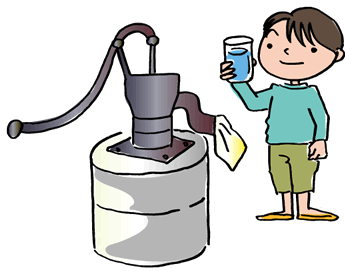
Standard waterworks in Japan filter stored water using a range of means. The water is sterilized and then used as potable drinking water. The majority of cesium is removed through this filtration process, so it is seldom detected in plumbing water.
With wells, if a lid is kept on, radioactive cesium cannot enter, so it will not penetrate the water in the well. Some people worried that radioactive cesium on the surface of the earth would seep into the ground and thus into well water, but it is understood that cesium adheres to the surface of the ground and does not sink further. Therefore, it does not penetrate deeper into the earth, and will seldom reach well water.
The prefecture has published the results of radiation density measurements of wells and underground water reservoirs throughout the prefecture on its official web site. As of this writing, no radioactive cesium has been detected in wells or underground reservoirs. You can check the status of well water in your region on the web site.
What is radioactive strontium?
The level of radioactive cesium present in foodstuffs is used as a measure of their safety. I heard that, after the accident at Fukushima Daiichi Nuclear Power Plant, there was radioactive strontium among the radioactive material released. What is strontium? Is it alright that there is no baseline level set for it?
When strontium enters the body, it collects in bone matter. Its concentration in the environment is exceedingly low.
Unlike radioactive iodine and radioactive cesium, which release gamma and beta rays, radioactive strontium only releases beta rays, so it cannot be easily measured.
Strontium resembles calcium, and, as previously mentioned, it is prone to collecting in bone matter. For this reason, radioactive strontium is used as a palliative aid for cancer patients suffering from pain associated with multiple bone metastasis.
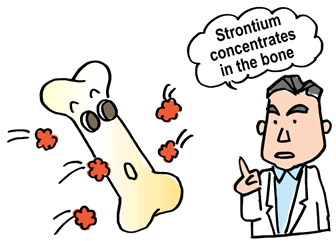
In September 2011, the Ministry of Education, Culture, Sports, Science and Technology published the results of its measurements of radioactive strontium in the environment. These found that the density of radioactive strontium found in the ground was, compared to radioactive cesium, 1/100th – a very low amount.
That data was then used to compute the future 50 year accumulation of active strontium, and the amount was 0.12 mSv at the highest. In other words, even in regions exposed to maximal amounts of strontium, a 50 year accumulation would still yield an extremely low total of combined external and internal strontium exposure.
For this reason, proper measures against radioactive cesium should also function to cover radioactive strontium. By taking measures such as paying attention to food safety data and avoiding the long-term intake of foods with higher than average levels of cesium, radioactive strontium exposure can be sufficiently curbed as well.
Can children play outside?
When spring comes and the weather warms, children want to play outside. However, out of concern for airborne radioactive material, I am keeping them indoors. Since the accident at Fukushima Daiichi Nuclear Power Plant, I have yet to let them outside. I am worried about the effects on their health.
Appropriate exercise is extremely important. Wounds should be thoroughly rinsed.
Levels of airborne radiation detected in the prefecture are based on radiation released by radioactive cesium that has now adhered to the ground, buildings, trees, and so on. Measuring the actual radiation levels found in the air yields no amount, so it is highly unlikely that allowing children to play outside during school activities and the like will cause them to absorb radiation. Even time spent outside for several hours produces extremely limited levels of external radiation exposure.

For instance, the prefectural web site reported in April 2012 an airborne radiation reading of 0.78 μSv an hour in Fukushima City. Daily outdoor activities of three hours, continued for one month, would yield a total 70 μSv of exposure – in other words, no more than 0.07 mSv.
Even if one falls and sustains injury while exercising outdoors, radioactive material will not immediately enter the body through the wound. Simply rinse the wound thoroughly with water. There is a chance of radioactive material adhering to the hands, feet, and hair after playing outside, but this can be alleviated by thoroughly washing and rinsing in the tub or shower.
Appropriate exercise is extremely important for children. A body weakened by lack of exercise will impede a child's growth and development, and the stress of being unable to play will accumulate. While it is perfectly natural to worry about radiation exposure, over-worrying can have the opposite effect of hindering children's wellbeing. It is important to allow your children to lead a balanced lifestyle.
Does the length of time one is exposed to radiation cause damage to one's genetic material?
There are two kinds of radiation exposure: acute radiation exposure, sustained all at once, and chronic radiation exposure, which is sustained over time, such as that sustained by residents of the prefectures affected by the Tepco Fukushima Daiichi accident. What are the respective differences of these, in terms of their impact on the human body?
In acute exposure, cells are improperly repaired. With chronic exposure, the body's natural repair functions prevent this.
Is the effect on the human body different in acute and chronic exposure, if the quantity of radiation exposure is the same? Living on Earth, we are exposed to an average of 2.4 mSv annually. This comes from radiation descending from outer space and from radioactive material in the ground, among other sources.
At the same time, there are some regions of the world exposed to higher levels of radiation. One area of India, for instance, is subjected to higher levels of radiation that rise up from the seafloor.

A test was once conducted on those radiation levels by having residents of Kerala, the region in question, wear badge-shaped testers for accumulated radiation. The result showed these people to be exposed to an average of 7 mSv per year. Those with the highest intake had 14 mSv per year. In simple terms, 7 mSv per year equates to over 100 mSv over a 15 year span. However, studies thus far have found no abnormal incidence of cancer or proof of shortened life span in the Kerala region. This fact suggests that the impact of acute versus chronic radiation exposure differs.
When large quantities of radiation are absorbed through acute exposure, damaged genetic material improperly repairs itself and mutates. However, it is believed that genetic material damaged by incremental exposure to radiation does not similarly mutate, as the body is constantly in a process of ongoing repair and repairs cells as they are damaged.
What impact will radiation exposure have on children who have yet to be born?
I am worried about the effects of radiation exposure from the accident at Fukushima Daiichi Nuclear Power Plant on children who have yet to be born. Will they be born with illnesses? Were victims of Hiroshima and Nagasaki alright?
There is no radiation effect in "second-generation" victims. The effects of radiation exposure do not pass on to later generations.
The children born to victims of Hiroshima and Nagasaki were referred to as "second-generation" victims. The question of whether radiation exposure can have a secondary effect on the next generation has been a major concern in regions throughout the world, and long-term surveys have been conducted.
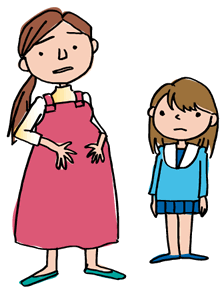
These surveys have not found any significant increase in cancers, or other ailments, in the children of radiation victims. Twenty-five years after the events of Chernobyl, where victims were exposed to internal radiation in the wake of a nuclear power plant accident, no health issues have been found in the children born after those events.
Tests in animals have also found that, when bone marrow or internal organ cells like the thyroid gland are exposed to radiation, no effects are passed on to the next generation. By contrast, if sperm or oocytes are exposed to extremely high levels of radiation, the effects are passed on, with effects such as chromosomal disorders.
There are currently several reasons postulated for why secondary health effects have not been demonstrated. One reason is because, unlike animal experiment, humans give birth very few times over the course of their lives, so sperm or eggs from potentially irradiated cells seldom go from fertilization to childbirth.
In addition, both internal and external radiation exposure levels in the prefecture are much lower than those sustained in Hiroshima, Nagasaki, and Chernobyl, so it is unlikely that there will be any effects on the next generation.
If a pregnant woman receives an X-ray, will the fetus be safe?
I was experiencing nausea and loss of appetite, so I had an X-ray at the hospital. I was found to be pregnant. At the time of the X-ray, I was three months pregnant, and I absorbed radiation from the test without realizing. Will my fetus be alright?
There are no risks of damage from X-ray photography. Put your mind at ease and enjoy a stress-free childbirth.
The International Commission on Radiological Protection (ICRP) advises that radiation under 100 mGy (equivalent to 100 mSv) should not be taken as grounds for abortion.
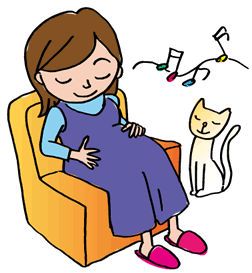
Children born to mothers who sustained radiation in Hiroshima and Nagasaki – in other words, those fetally exposed to extremely high levels – manifested illnesses like microcephaly. However, microcephaly and other illnesses have not been observed in cases under 100 mSv. The ICRP's recommendation is based on this data. This applies both to radiation exposure from an accident and that sustained during regular health screenings.
In X-ray photography of the stomach, the actual amount of radiation the child is exposed to is 200 μSv – in other words, about 0.2 mSv. This amount is far below 1 mSv.
At the very least, you have absolutely no need to worry about the impact of the screening on your child. By contrast, the stress you feel can have an impact on your child, so we advise relaxing for a stress-free childbirth.
Note that if you are pregnant or may be pregnant, care must also be paid to any medicines administered, not just to screenings using radiation. When undergoing an examination, convey your concerns to the doctor or nurse and discuss whether or not you should undergo a particular screening or treatment.
Radiation Exposure and The Thyroid Gland
By what mechanisms does the thyroid gland absorb radioactive iodine?
I was told that radioactive iodine released during the Tepco Fukushima Daiichi accident is absorbed by the thyroid gland. In what way is it absorbed? Also, why are Japanese people are more likely to absorb it?
Japanese people are more likely to absorb radioactive iodine than other people are because of an accumulation due to hormone synthesis. The Japanese diet includes many seaweeds, and often involves overintake of iodine.
Iodine forms part of the hormones secreted by the thyroid gland. For this reason, iodine entering the body tends to accumulate in that region.
Iodine is particularly found in marine products and seaweed. The Japanese diet includes considerable daily amounts of seaweed and kelp. Even those people who do not eat much raw kelp are exposed, however, by other foods, such as soup stock made from kelp. In this way, Japanese people consume, if not just adequate amounts, then somewhat excessive amounts, of iodine.

Looked at globally, there are few regions that "overconsume" iodine in this way. By contrast, there are many parts of the world where an under-intake of iodine is found. In particular, landlocked countries do not have sufficient iodine in the diet, and this is referred to as iodine deficiency. In such regions, enlarged thyroid glands and decreased thyroid function are seen. In recent years, measures such as the addition of iodine to table salt have been employed in order to remedy these issues.
Immediately following the March 2011 Fukushima Daiichi Nuclear Power Plant accident, large quantities of iodine were released into the environment. Like ordinary iodine, radioactive iodine tends to accumulate in the thyroid gland when it enters the body and is one cause of internal radiation exposure. For this reason, a provision threshold was set after the accident (now the baseline level) calling for a decrease over-consumption of foods contaminated with radioactive iodine and the attendant reduction of internal radiation exposure to the thyroid gland.
What about screenings of children's thyroid glands?
Following the accident at Fukushima Daiichi Nuclear Power Plant, health screenings for prefecture residents were being issued, with thyroid screenings for children among them. When the thyroid is checked, what is checked, and in what way?
The thyroid gland is felt directly and hormone levels are measured. Ultrasonic waves are used for more detailed analysis.
There are several ways of screening the thyroid gland. The thyroid gland is an organ on the surface of the body, so if it is enlarged, it can be checked directly by touching the neck.
In addition, the thyroid gland secretes hormones, so the hormones released, as well as those released by the pituitary gland (an organ in the cerebrum which releases thyroid-stimulating hormones), which regulates the thyroid hormone secretions, can be measured to assess the condition of the gland.
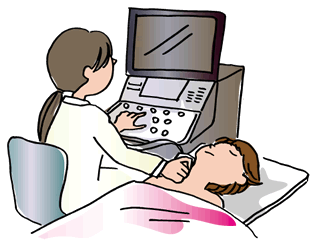
For instance, in conditions like Grave's disease, where the thyroid is aggravated, thyroid hormone production increases, while thyroid-stimulating hormones decrease. By contrast, when thyroid function decreases, thyroid hormones, in turn, decrease, and thyroid-stimulating hormones increase. Antibodies for these respective conditions can be measured to make a determination on present thyroid function.
The ultrasonic screenings being used in the first round of screenings for prefectural residents are extremely effective. Ultrasonic screenings allow not only for the assessment of the shape, but also the size and, occasionally, the quantity of blood in the thyroid to be observed in detail. In recent years, the quality of ultrasonic machinery has increased markedly, including its image resolution capabilities, allowing for the depiction of detailed structures in ways that were not previously possible.
In this way, there is a range of thyroid screenings that are variously used or combined, depending on the ailment or condition.
Some children were found with cysts on their thyroids. What should we make of this?
Following the accident at Fukushima Daiichi Nuclear accident and the prefectural health screenings of residents' thyroids, some children with lumps or cysts in the thyroid have not required further examinations. Is this really alright?
Many people develop cysts on their thyroid; this is not unusual. Cysts of under 20 mm in diameter do not require further examination.
The majority of children who received ultrasonic screenings and had lumps of 5 mm in diameter or lower, or cysts of 20 mm in diameter or lower, and were given an "A2" designation, indicating that they had thyroid cysts.
In cysts of the thyroid, a cystic (fluid-containing) pouch develops in the thyroid gland. This is sometimes present at birth and sometimes appears over the course of growth and then disappears. Thyroid gland cysts are found in many people, including children, during ultrasonic screenings.
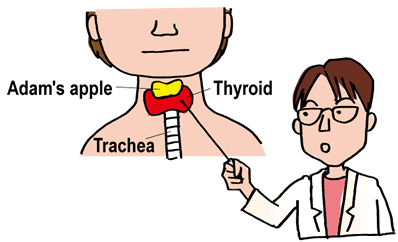
In particular, today's ultrasonic imaging technology has greater fidelity, so extremely small cysts not previously visible can now be found, with many children having cysts.
Cysts containing no solid parts can be treated as benign, and they seldom require further treatment. Cysts with a hard component are occasionally malignant, so those treated not as cysts, but as nodules (lumps), and those with a diameter exceeding 5.1 mm require a designation of "B," indicating the need for a secondary screening. For this reason, children receiving an "A2" designation do not require further examination.
Until now, there have been no large-scale thyroid screenings of children in Japan surveying the occurrence of various symptoms. Ultrasonic screenings of children in Nagasaki and other regions beyond the Fukushima Prefecture are now being carried out, with plans to compare that data against information obtained in the Fukushima Prefecture.
Should I be worried about a small nodule on my child's thyroid gland?
The health screenings that the prefecture and Fukushima Medical University have launched use ultrasonic technology to check children's thyroid glands. I often hear of cases where small nodules are detected, but it seems people are told that these lumps have no effect on their health. Is this really true?
This is not unusual, and in most cases the nodules are benign. In some cases, these nodules go away as the child grows.
Among those children who received ultrasonic thyroid gland screenings as part of the prefectural health screenings were some found to have with nodules under 5mm in diameter or cysts under 20mm in diameter. These were given a class "A2" designation. The majority of A2 designations are for thyroid cysts (fluid-containing pouches). In some cases, a child is born with a thyroid cyst, while in others they develop as part of the natural growth process and then disappear. Thyroid nodules (lumps) and cysts are not unusual even in children, and most are benign.
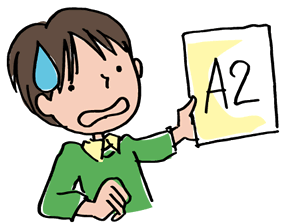
For this reason, as with those designated "A1" for no nodules or cysts, there is no need for a secondary blood or urine sample. For those cases where a cyst with a solid part is found, or for a node exceeding 5.1 mm in diameter, a "B" designation is given, indicating the need for secondary screening.
Thyroid cancer develops comparatively very slowly, and is it known for seldom reaching complications leading to death. After one year and three months since the accident at Fukushima Daiichi Nuclear Power Plant, there is no estimated further impact from radiation exposure. Going forward, the long-term observation of symptoms is now crucial.
Currently, the prefecture is administering the first round of ultrasonic screenings of the thyroid. Once that phase completes, a second round is planned. Ongoing checks to ensure that the nodules and cysts have not changed since the last screening must be carried out.
What is thyroid cancer?
I am worried about the possibility of thyroid cancer from the radioactive iodine released in the accident at Fukushima Daiichi Nuclear Power Plant. I understand that many cases of thyroid cancer appeared after the Chernobyl nuclear accident. Just what sort of a sickness is thyroid cancer?
Thyroid cancer shows a high incidence of appearance and develops slowly. Many people live with thyroid cancer without knowing it.
As the name suggests, thyroid cancer is a cancer of the thyroid gland. It is classified into several types, depending on its shape under a microscope. The most common, in over 80% of cases, is a type called papillary cancer.
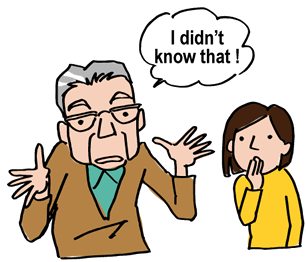
It is known that papillary thyroid cancer develops more slowly than all other cancers of the organs, and it does not show specific symptoms. For this reason, even if a thyroid cancer papule just a few mm in diameter appears, many people lead their lives without noticing.
A past survey by autopsy of the rate of thyroid cancer in the population found thyroid cancer in about 10 to 20% of people post-death, with some variation by country. In other words, thyroid cancer is comparatively common and, moreover, many people lead their entire lives without noticing it.
Screenings for thyroid cancer involve using ultrasonic scans and extracting the cells believed to be cancerous and observing them under the microscope. In cases where a diagnosis of thyroid cancer is given and treatment is required, surgery is generally administered to remove the cancerous area. Because the thyroid gland is an organ that releases growth hormone, removing the majority of it causes this hormone to stop being released. In such cases, patients take thyroid gland hormone medication and regulate their hormone level concentrations to a regular amount.
Why did thyroid cancer appear in victims several years after the Chernobyl accident?
I heard that the radioactive iodine released in the accident at Fukushima Daiichi Nuclear Power Plant has a short half-life of just a few days. In spite of that, I understand that thyroid cancer occurred in victims of the Chernobyl accident some few years to dozen years after the fact. Why is that?
Cells damaged from radiation are not able to repair themselves properly, which leads to higher risks.
One of the representative forms of radioactive iodine is iodine-131. Iodine-131 has a comparatively short half-life of eight days, but it releases radioactive beta and gamma rays during that time.
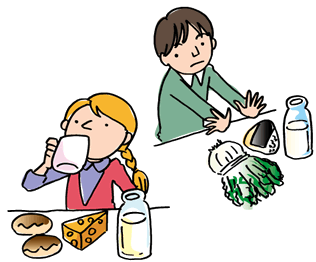
After the Chernobyl nuclear accident, children consumed food, in particular cow's milk, contaminated with iodine-131 and other radioactive iodine isotopes. This caused an excess intake of radioactive iodine in the thyroid gland, with the radiation released therefrom causing internal radiation exposure.
The half-life of radioactive iodine is, in fact, short, so it erodes after a few months. However, genetic material is damaged by the radiation produced during that time. Most damaged material is repaired by the body's repair processes, but when large quantities of genetic material are damaged by high radiation output at once, it occasionally produces genetic material that is improperly repaired. These mutations pose the risk of becoming cancer in later years, or even dozens of years, after the fact.
This process is what caused radioactive iodine, with its short half-life, to cause internal radiation in victims of the Chernobyl accident and caused an increase in thyroid cancer. Based on this, following the March 2011 Fukushima Daiichi Nuclear Power Plant accident, a provisional threshold was set immediately after the incident, intended to curb the excess consumption of foodstuffs contaminated with, in particular, radioactive iodine and the attendant risk of internal radiation. Currently, an even stricter threshold is in place.
Why are radiation levels at monitoring posts and for individuals different?
If you simply add up the ambient radiation levels measured at monitoring posts, they are much higher than the measured individual radiation doses. Why do such differences occur?
Individual radiation doses vary by residence and behavior - they also do not match ambient radiation levels.
Many municipalities in the Fukushima Prefecture are measuring radiation levels based on personal dosimeters and publicizing those results.
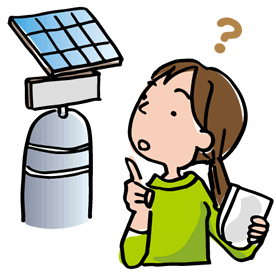
For example, in Fukushima City, personal dosimeters were distributed to all children junior high school age and younger for three months, from November 2012 to January 2013, to measure their personal radiation exposure. The results showed that most of these children had an exposure of 0.5 mSv or less for these three months. However, simply adding the ambient radiation levels published for the city would yield a higher value.
The gamma rays, for example, that are emitted from radioactive cesium are blocked by concrete and lead. Therefore, being indoors considerably reduces radiation exposure. For instance, being inside a wooden home reduces exposure by about half, and being inside a steel-frame house reduces exposure by about 90%, so exposure is reduced by that much during the time the person is indoors.
Furthermore, while outdoors, it is not often the case that people remain in one place for a long time. So, the values measured at monitoring posts do not necessarily match individuals' exposure.
Currently, the Fukushima Prefecture and its municipalities are publishing the results of measurements by personal dosimeters on their web pages. We recommend that you combine personal exposure measurements taken from your own dosimeter with data from monitoring posts to reference in your daily life in the future.
Is radiocesium the only radioactive element detected by whole-body counters (WBCs)?
In Fukushima, internal exposure tests are being conducted using whole-body counters (WBC). Are the radioactive substances detected with the WBCs restricted to radiocesium? Do they not detect other radioactive substances?
WBC can always detect potassium, but cesium is detected with less frequency.
By detecting the gamma radiation that is emitted from the radioactive substances in your body, a WBC can evaluate the quantity of radioactive material in your body and the internal exposure it causes.
Currently, in the WBC studies conducted in Fukushima, the naturally occurring radioactive material potassium-40 is detected, as is the artificially produced radioactive cesium, which is a radioactive material produced by the nuclear accident.
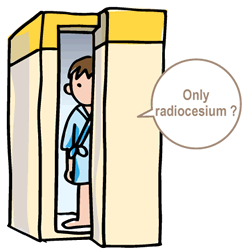
The artificially produced radioactive material emitted during the Tepco Fukushima Daiichi Nuclear Power Plant accident four years ago was radioactive iodine, which has a half-life of eight days, and radioactive cesium, which has a relatively long half-life.
These emissions included approximately the same amount of cesium-134 and cesium-137. Therefore, in the inspections conducted in the early days following the accident, there were many cases where equal amounts of cesium-134 and cesium-137 were detected. However, most people are currently not detecting any cesium-134, which has a half-life of two years. Many people are detecting only cesium-137.
As the frequency with which cesium-137 is detected is extremely low, the internal exposure caused by it is far below 1 mSv. In addition, the WBCs in Fukushima are not detecting any artificial radioactive substances other than radioactive cesium.
On the other hand, potassium-40 accounts for about 0.01% of the potassium that exists in the body. There are between 3,000 and 6,000 Bq in an adult's body, so it would show up on anyone's WBC scan.
What is the effect of low-dose exposure to radiation through CT scans?
My child was complaining of headaches, so we went to the hospital for a CT scan of his head. I am worried about the scan's effect on his health, considering the low dose of radiation he already received following the Tepco Fukushima Daiichi accident.
If you are concerned about the purpose or effects of CT scans, consult your nurse or doctor.
A CT scan uses X-rays to take cross-section images of the body and can be used to visualize medical abnormalities that cannot be seen in detail on normal X-rays. CT scans are used widely in the medical field. CT scans have proliferated more widely in Japan than in any other country, with a rate of about 90 CT scans per million people, which is overwhelmingly higher than CT scan rates in the US or UK.
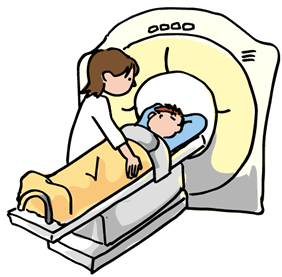
The amount of radiation delivered during a scan depends upon the body part in question, but for a CT scan of the head, there is an average radiation exposure of 3 -4 mSv, or 3,000 -4,000 μSv. Exposure to radiation through medical treatment is referred to as "medical exposure." Research to date has not scientifically shown any adverse health effects from one time exposure at these levels.
The International Commission on Radiological Protection (ICRP), which sets international radiological protection standards, has said that ''it would not be appropriate to set upper limits for radiation due to medical exposure.'' This is because the use of radiation in medical treatment benefits the patient, and it is assumed that these benefits outweigh the disadvantages of any medical exposure.
On the other hand, physicians who conduct radiological treatments and tests must, of course, take into account whether the test or treatment is truly beneficial for the person undergoing it. In the future, when your child receives radiological treatment or exams, you may want to ask the doctor or nurse the purpose, effect, and amount of exposure, if you are concerned.
What are the health effects of radiation on the human body?
The health effects of radiation are divided into two categories: "deterministic effects" and "stochastic effects." What are the characteristics of these effects?
The difference between a "deterministic" and "stochastic" effect is the presence or absence of a threshold.
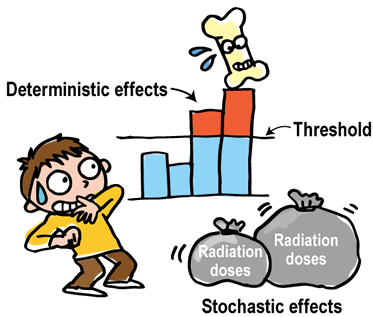
Health effects from radiation exposure can present as either deterministic effects or stochastic effects. Deterministic effects are those that occur after you exceed a certain dosage of radiation (called a "threshold"). Most acute symptoms are deterministic effects. For example, men show a transient decrease in sperm count after exposure to more than 250 mSv at once, and there is a reduction in bone marrow after exposure to more than 500 mSv. This is known to cause a reduction in blood cells, such as white blood cells, red blood cells, and platelets. However, these symptoms do not occur after exposure below these thresholds.
On the other hand, stochastic effects do not have a threshold, but the probability of them occurring increases with greater exposure. Stochastic effects include cancers and leukemia that are caused by radiation exposure. It is often said that, based on surveys of nuclear bomb survivors, exposure to 200 mSv increases the likelihood of dying from cancer by 1%. With exposures above that amount, the likelihood of cancer increases along with the increased exposure. On the other hand, with exposures of less than 100 mSv, the risk of cancer is so low that no increase in its incidence has been proven. In addition, stochastic effects on the genes of plants and insects have been found, but there have not yet been any reports of genetic effects of radiation exposure in humans.
Are the effects of radiation exposure on a fetus by mother's exposure?
Are there any cases of increased illnesses among people who survived nuclear explosions while exposed as fetuses? I am concerned that there will be children born in Fukushima with disabilities, due to the effects of the Tepco Fukushima Daiichi accident.
Birth defects can result after high-dose exposure from nuclear explosions, but they are unlikely to occur due to the Fukushima nuclear power plant accident.

Nuclear bomb survivors who were exposed while inside the uterus are referred to as "in-utero survivors." Studies following their exposure have confirmed that in-utero survivors showed an increase in a disease called microcephaly. Children with microcephaly have a significantly smaller head circumference, compared to children of the same age, which causes delays in mental development and growth.
In surveys of in-utero survivors of the Hiroshima and Nagasaki nuclear explosions, it was confirmed that fetuses exposed to over 300 mGy between 8 and 15 weeks of pregnancy, or between 500 and 700 mGy from the 16th week of pregnancy on (weeks 16-40) showed severe mental retardation. Furthermore, in-utero exposure to 1,000 mGy or more has been shown to result in a 3-4% increase in developmental disorders by age 18.
On the other hand, no increase in microcephaly has been shown in in-utero survivors whose exposure was below these levels. Based on these facts, the International Commission on Radiological Protection (ICRP) has recommended that "in-utero exposure to less than 100 mGy should not be considered grounds for abortion."
Between the Fukushima nuclear accident and now, there have not been any fetuses that might have been exposed to over 100 mGy. For this reason, it is unlikely that there will be an increase in microcephaly in Fukushima, as there was among in-utero survivors of the nuclear explosions of the 1940s. You do not need to worry about pregnancy and giving birth.
Can exposure to radiation cause nosebleeds?
I recently came across a comic that had a scene where the main characters, all of whom had visited the Tepco Fukushima Daiichi Nuclear Power Plant, experienced unexplained nosebleeds. Could exposure to radiation in Fukushima cause nosebleeds?
Nosebleeds are possible after exceeding a certain level of radiation, but not possible in the case of Fukushima.
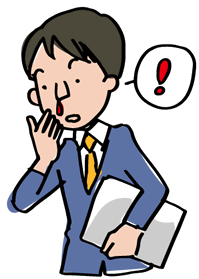
Exposure to an extremely high amount of radiation at once can result in some symptoms, either immediately after exposure or several days or weeks later. This is called "acute radiation syndrome" and results from radiation exposure. On the other hand, cancer caused by radiation exposure does not occur until several years or even decades later. These are referred to as "delayed effects" or "aftereffects."
For example, exposure to more than 500 mGy of radiation at once can result in damage to the bone marrow, which makes blood cells, and reductions in the number of white blood cells, red blood cells, and platelets, so victims are more susceptible to infections and anemia and have blood-clotting problems. Exposure to more than 1,000 mGy (1 Gy*) at once can cause systemic symptoms, such as nausea and general malaise. These symptoms of acute radiation sickness are called "deterministic effects" and appear when exposure exceeds a certain level (threshold), but do not appear for quantities of radiation below that threshold.
Between the nuclear accident and now, there have not been any cases of general Fukushima residents exposed to enough radiation to result in acute radiation sickness. Nosebleeds are known to have a variety of causes, but it is not conceivable that nosebleeds in Fukushima would be caused by radiation exposure.
* Gy (Gray)
An absorbed dose of radiation. For the radiation emitted by iodine-131 and cesium-137 (beta rays and gamma rays), 1 Gy is equal to 1 Sv.
How different are exposure levels in Chernobyl compared to Fukushima?
I heard that about 1/6th the amount of radioactive material was emitted by the Tepco Fukushima Daiichi accident, compared to that emitted by the Chernobyl nuclear accident. About how much radiation were local residents actually exposed to?
Local residents were exposed to less than 1/10th the external exposure of those exposed in Chernobyl, and they have even less internal exposure to iodine.
A basic survey of the health of Fukushima residents estimated their external exposure to radiation based on a questionnaire. More than 532,000 responses were received as of March 31, 2015. The results estimated that there was an average external exposure of about 0.8 mSv.
After the Chernobyl nuclear accident, Ukrainian evacuees had an average exposure of 20 mSv, and Belorussian evacuees had an average exposure of 30 mSv, so, in terms of external exposure, Fukushima residents' exposure was about 1/10th that of Chernobyl's area residents.
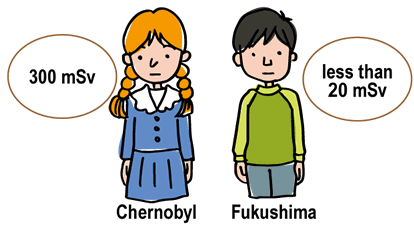
Internal exposure, and in particular thyroid exposure to radioactive iodine soon after the nuclear reaction, was found to be between 200 and 500 mSv, and averaged about 300 mSv, among a majority of Ukrainian and Belorussian evacuees. On the other hand, in a survey of the radiation exposure of 1,000 people in the municipalities of Iwaki, Kawamata, and Iitate, the highest per-person exposure was 43 mSv, and nearly 90% of the children tested had exposure rates of less than 20 mSv. Therefore, the internal exposure to radioactive iodine in Fukushima was far less than 1/10th of the exposure at Chernobyl.
The differences between the internal exposure rates in Chernobyl and Fukushima were due to measures taken in Fukushima to reduce internal exposure, such as establishing temporary standards directly after the accident. We are currently taking ongoing measures to ensure food safety.
Were there acute radiation exposure symptoms in Chernobyl?
After the 1986 Chernobyl nuclear accident, did workers who were involved in the emergency recovery work at the power plant show symptoms of acute radiation syndrome or die?
Many of the Chernobyl recovery workers showed symptoms of acute radiation syndrome, but these were not seen in residents of the surrounding area.
Immediately after the Chernobyl nuclear accident, many firefighters and military personnel went into the plant for recovery work. Especially at the time of the accident, efforts to protect workers from the high levels of radiation were insufficient, and many workers were exposed to extremely high levels of radiation. As a result, 134 people developed acute radiation syndrome, and 28 of them died within three weeks.
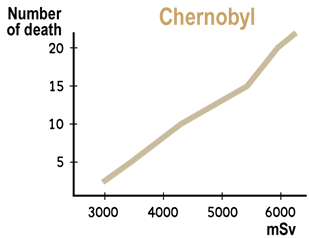
Comparisons of mortality and radiation exposure showed that, of the more than 90 people who were exposed to 4,000 mSv or less, only one died. By contrast, of the 22 people who were exposed to between 4,000 and 6,000 mSv, seven died from severe infections or skin and intestinal disorders. In addition, among the 21 people exposed to 6,000 mSv or more, 20 died of similar conditions. As these numbers demonstrate, mortality from acute radiation exposure depends upon the amount of exposure.
On the other hand, there were no evacuees from the area around the Chernobyl plant who showed symptoms of acute radiation syndrome. This was due to the fact that external exposure among evacuees in the region averaged 20 - 30 mSv, which was much less than the workers inside the power plant.
The general population in Chernobyl did not exhibit signs of acute radiation syndrome. However, since they ate and drank agricultural products, and especially dairy products with high concentrations of radioactive iodine soon after the accident, there were increased cases of pediatric thyroid cancer several years later, due to internal exposure in the thyroid.
What was the incidence rate of thyroid cancer in Chernobyl?
I heard that there was an increase in children developing thyroid cancer due to the effects of the 1986 Chernobyl nuclear accident. Specifically what age children saw this increased rate of thyroid cancer?
Thyroid problems increased in incidence among children ages three and younger at the time of the accident; there was a proven causative relationship with their radiation exposure.
The Chernobyl nuclear accident caused radioactive materials, especially radioactive iodine and radioactive cesium, to be spread over large swaths of land in what is now Belarus, Russia, and Ukraine.
At the time of the accident, no measures were taken to prevent people from eating vegetables and drinking milk contaminated with radioactive iodine, so exposure spread among residents who consumed them. It is believed that internal thyroid exposure among evacuees averaged 200 - 300 mSv.

For five years, beginning in 1990, which was five years after the accident, thyroid screenings were conducted for the approximately 120,000 children who were 10 and younger at the time of the accident in the three countries surrounding Chernobyl. This was done with the participation of experts from Nagasaki and Hiroshima Universities. The results showed an increase in the incidence rate of thyroid cancers among those who were three years old or younger at the time of the accident. It was also shown that the incidence of pediatric thyroid cancer was especially high in the Gomel province of Belarus, which had the most serious radioactive contamination from the accident.
In general, it is believed that, even among children, the incidence of thyroid cancer increased with age. However, since thyroid cancer in Chernobyl was found to be concentrated among the generation that was three years old or younger at the time of the accident – those who were most sensitive to radiation, which was high in the Gomel province, where contamination was most severe – it was scientifically proven that there was a causal link between the pediatric thyroid cancers seen in this region and radiation exposure from the accident.
Were there increases in non-thyroidal cancers around Chernobyl?
It is known that the incidence of thyroid cancer among residents near Chernobyl increased due to the health effects of exposure to radiation caused by the nuclear power plant accident. Were there increases in other types of cancer as well?
There has been no scientifically proven link to heightened levels of cancer in the Chernobyl area, but ongoing assessments are necessary.
As a result of the Chernobyl nuclear plant accident, there was a high incidence of thyroid cancer among residents in the area, and, in particular, pediatric thyroid cancer. This is thought to be because of internal exposure to radioactive iodine immediately following the accident; the thyroid, which accumulates iodine easily, was exposed to high levels of radioactivity.
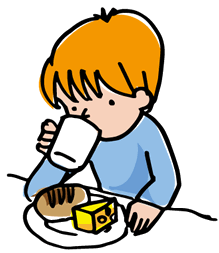
In 2011, the United Nations Scientific Committee of the Effects of Atomic Radiation (UNSCEAR), marking 25 years since the accident, put together a report on the health effects of the incident. It points out that "6,000 people, a substantial number, who were children at the time of the accident and drank unrestricted quantities of contaminated milk developed thyroid cancer."
On the other hand, the report clearly states, "There is no scientific evidence of health effects occurring due to exposure among the general population other than thyroid cancer." In other words, there is no scientific evidence of an increase in cancers, other than thyroid cancer, among the residents who lived near Chernobyl.
There is scientific evidence that the survivors of the nuclear explosions in Hiroshima and Nagasaki had increased rates of leukemia and various solid cancers. While exposure from the Hiroshima and Nagasaki nuclear explosions was mostly external, exposure at Chernobyl was mostly internal and due to radioactive iodine. It is believed that these differences in type of exposure resulted in different effects on cancer incidence. However, it will remain necessary to conduct ongoing evaluations of the health effects on residents in Chernobyl, especially for those who were children at the time of the accident.
What have been the genetic effects of exposure following the Chernobyl accident?
I heard that there were no genetic effects on the nuclear explosion survivors in Hiroshima and Nagasaki. Were there any genetic effects due to internal exposure after the Chernobyl accident?
There are no scientifically proven genetic effects of nuclear accidents, so this is unlikely to occur in Fukushima.
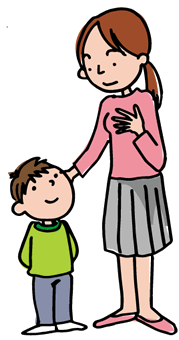
After Hiroshima and Nagasaki were hit by nuclear bombs, there were no genetic effects found among the children of survivors (the so-called "second generation survivors"). In addition, there is ongoing research tracking the incidence of cancer death rates among the children of survivors, as well as the incidence of lifestyle-related diseases. To date, there has been no evidence found of increased rates of diseases among second generation survivors.
Similarly, there have been no genetic effects found in the children of survivors born after the Chernobyl accident. In addition, there has been no scientific evidence found of genetic effects on humans in studies performed on subjects other than the nuclear bomb and Chernobyl survivors.
Even in animal experiments where the subjects' bone marrow, thyroids, and organ cells (somatic cells) were exposed to radiation, the effects of radiation exposure were not passed on to the next generation. On the other hand, it is known that, if sperm or egg cells are exposed to high levels of radiation, some effects, such as chromosome disorders, can be passed on to the next generation.
There are a few possible reasons why genetic effects have not been seen after human exposure to radiation. Unlike most animals, humans have an extremely low lifelong birth rate, so it is believed that very few exposed sperm and egg cells fertilize and develop to birth. Moreover, the exposure levels in Fukushima were much lower than those at either Hiroshima and Nagasaki or Chernobyl, so it is unlikely that there will be any lingering genetic effects.
Does the thyroid gland have weak resistance to radiation?
Since the Tepco Fukushima Daiichi Nuclear Power Plant accident, there has been attention drawn to thyroid issues. Is the thyroid gland "weak" against radiation?
Iodine tends to accumulate, so the Fukushima Prefecture has set a provisional threshold on radiation exposure.

It is known that, as a rule, the health effects of radiation exposure are more likely to develop in structures or parts of the body engaged in active cell division. For example, the bone marrow creates red and white blood cells and platelets, so it engages in frequent cell division. For this reason, when the bone marrow is exposed to high levels of radiation, there is an increased risk of acute symptoms such as reduced blood cell count and leukemia, a disease of the bone marrow.
The thyroid gland is involved in the production of thyroid hormone, so it does not engage in as active cell division as the bone marrow. Nevertheless, the reason there was an increased incidence of thyroid cancer among children after the Chernobyl nuclear accident was because of the radioactive iodine released, which accumulated in their thyroid glands.
Thyroid hormones produced by the thyroid gland contain iodine, which is found in ample quantities in seaweed and seafood. Therefore, even under normal circumstances, iodine tends to accumulate in the thyroid. The radioactive iodine released in Chernobyl was collected, in terms of the food chain, in high concentrations in dairy milk. When children drank this milk, radioactive iodine collected in their thyroid glands and exposed them to high levels of internal radiation. It is believed that this is the reason why the incidence of thyroid cancer was high five years after the Chernobyl accident.
With the above in mind, the Fukushima Prefecture set a provisional exposure threshold immediately after the accident and took measures to curb internal radiation exposure from radioactive iodine in residents' thyroid glands.
What types of thyroid cancer are there, and what are their characteristics?
Thyroid cancer was widespread after the Chernobyl accident, so there were concerns of a similar problem developing in the Fukushima Prefecture following the events of the Tepco Fukushima Daiichi accident. What types of thyroid cancer are there, and what are their characteristics?
There are four types of thyroid cancer, all of which develop quite slowly when compared to other cancers.

Thyroid cancer is divided into four types, based on its appearance under a microscope; these are papillary cancer, follicular cancer, medullary cancer, and undifferentiated cancer.
Of these cancer types, nearly 80% of cases are papillary cancer. As the Latin root suggests, under a microscope, the cells can be seen propagating in a papule (nipple) shape. It is most commonly found among women in their 30s. Beyond feeling a lump on the throat, there are no particularly defining symptoms, but phenomena such as a hoarse voice, throat pain, and trouble swallowing can occur. With advancements in ultrasonic testing, papillary cancer is sometimes found during regular health screenings, before the person even notices any symptoms.
Compared to all other types of cancer, including that of other organs, papillary thyroid cancer progresses slowly, so, in many cases, people live with extremely small papules a few mm in size without realizing it or being affected by them.
A past study by autopsy found that, while there is some variation by country, papillary cancer was present in 10-20% of all people after death. In other words, papillary thyroid cancer is comparatively common and, in most cases, people lead full lives without noticing it.
Food Safety and Radiation
I'm worried that the milk my children receive in their school lunches contains radiation.
Since the Tepco Fukushima Daiichi accident, I've been worried about my child's school lunches, because of the radiation problem. I'm particularly worried about the milk. Should I be concerned?
Regular tests are performed in Fukushima, and no radiation has been detected since January 2014.
Following the March 2011 accident, levels of radioactive iodine exceeding the provisional threshold were found in fresh dairy milk. Today, it is known that radioactive iodine is prone to concentrating in dairy milk, and that this led to widespread thyroid cancers after the Chernobyl nuclear accident in 1986.
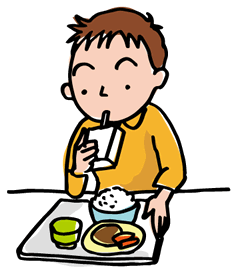
Following that incident, radioactive material released from the power plant, in particular radioactive iodine, entered the water supply and then the pastures on which cattle grazed, thereby becoming concentrated in their milk. Children, in particular, went on to consume this tainted milk. The radioactive iodine then entered their bodies and accumulated in their thyroid glands, causing high levels of internal radiation exposure. It is believed that this process contributed to the higher incidence of thyroid cancer in the years thereafter. However, radioactive iodine has a short half-life; at present, it has not been detected in any fresh milk or other food products in the Fukushima region.
Radioactive cesium, on the other hand, is known to concentrate in wild mushrooms and boar, but it does not concentrate in dairy milk. Thus far, there have been no reports of dairy milk in the Fukushima Prefecture with levels of radioactive cesium exceeding the threshold. In addition, the prefecture periodically tests the entire single serving of school lunches and reports the ongoing levels of radioactive material detected. As of January 2014, 212 meals had been tested, and no radioactive cesium was found in any sample.
School lunches are important, both for their contribution to children's healthy growth and for giving children a proper understanding of the role of food in everyday life. There is no need for concern at present. We suggest continuing to monitor the results of survey data going forward.
Why was radiation detected in wild animals?
I have heard that, since the Tepco Fukushima Daiichi accident, radioactive material has been detected in the meat of wild animals, like boar. Although such levels are no longer being detected in livestock, why do they persist in wild animals?
Animals consume material from the ground, so radiation accumulates in their meat. Avoid domesticating these animals for home consumption.
Tests by the prefecture have detected high levels of radioactive cesium in wild animals, and in wild boars, in particular.

Boars are omnivorous, and they are known to consume food like acorns and worms directly from the ground, with the soil mixed in. It is believed that radioactive cesium tends to concentrate in worms relatively easily, and it is additionally believed that, because the boars eat soil from the surface of the ground, on which radioactive cesium is adhered, they are more prone to having cesium collect in their bodies.
There are currently inspection measures in place for livestock products like dairy and meat sold on the market. Products with levels of radioactive cesium that exceed the threshold are unlikely to enter the consumer supply. However, radioactive cesium that exceeds the threshold is being detected in not only wild boar, but in wild animals such as bear and pheasant, so the simple domestication of these animals for home consumption should be avoided.
In recent years, most municipal governments have been measuring radiation levels. If you are concerned about the meat of the wild animals you have hunted, or of meat you have received from a hunter, we suggest having it tested.
Even if you were to eat the meat of a wild animal with radioactive cesium levels exceeding the threshold, the level of internal radiation you would be exposed to would be limited. If you have since ceased continuing to eat those products, the amount of internal radiation you would be exposed to should be sufficiently curbed.
Are there any health effects related to eating wild mushrooms?
Radioactive cesium is frequently detected in wild mushrooms. Are there any negative health effects from eating them just a few times? What about mushrooms sold on the market?
There are minimal negative health effects that could occur from eating wild mushrooms a few times, and there are no issues with mushrooms sold on the market.
It is known from the Chernobyl accident that radioactive cesium is prone to collecting in mushrooms. Nagasaki University installed a satellite office in Kawauchi in 2013 and collected and dried mushrooms from the area, and then measured the levels of radioactive material found in them.

The results indicated that nearly 90% of the 150 dried mushrooms measured contained more than the 100 Bq/kg of radioactive cesium stipulated as the threshold in the Food Sanitation Act.
What internal radiation would one be exposed to from consuming mushrooms over this limit? As an example, eating 100 g of mushrooms containing 200 Bq/kg of radioactive cesium would expose a person to 0.26 μSv of radiation. If one were to continue eating these mushrooms every day for a year, the amount would be 100 μSv, or 0.1 mSv.
This may seem like a surprisingly small amount, but that is because the current threshold is set very low, so as to ensure that annual exposure does not exceed 1 mSv. While levels of radioactive cesium must continue to be monitored, if one were to eat mushrooms a few times that exceeded the threshold, there would be no impact on one's health.
In addition, the majority of mushrooms on the market are cultivated in greenhouses, undergo testing for radioactive content, and are guaranteed to be below the threshold, so there is no threat to one's health from eating cultivated mushrooms.
Can radiocesium enter well water?
It has now been nearly four years since the Tepco Fukushima Daiichi Nuclear Power Plant accident. I use well water at home, so I am worried about radioactive cesium entering the water over time. Should I be concerned?
Radiation does not penetrate deep into the ground, so there are no concerns about its effect on well water, even over time.
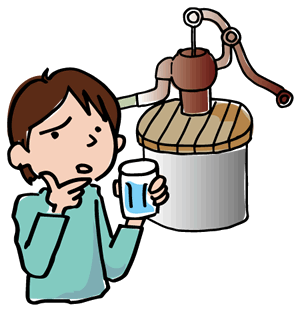
The prefecture publicizes data on its web site on the amount of radioactive cesium detected in wells in each region. No radioactive cesium has been detected in well water. This is largely due to the fact that cesium is easily filtered.
After the nuclear reactor incident, radioactive cesium drifted through the air and reached the ground. Today, the majority of wells in the country are covered with lids, which block exposure, so the cesium cannot enter them. In addition, radioactive cesium adheres to the ground, but does not absorb into the soil, so it will seldom, if ever, penetrate deeper over time or into well water.
In 2013, Nagasaki University collected soil samples from sites 12-15 km away from the Chernobyl nuclear power plant and measured them for the presence of radioactive cesium. The levels of radioactive cesium contained in the soil from 5-10 cm below the ground were between 1/7 and 1/10 of the levels in the soil from 0-5 cm below the ground. In other words, even in Chernobyl, where over a quarter of a century had elapsed since the incident occurred, the majority of cesium has remained on the soil's surface and not penetrated further.
However, climatological conditions, such as heavy rains and landslides, can cause radioactive cesium to shift, changing the levels of concentration in the topsoil. Detailed monitoring and data collection will be required going forward.
What is the level of concentration of radioactive strontium and plutonium in tap water?
I often hear that tests of tap water do not find any radioactive cesium, but I'm worried about radioactive strontium and plutonium. Can I continue drinking this water?
No plutonium has been detected in the Fukushima area, and strontium is within safe levels.
Compared to radioactive cesium, which releases gamma and beta rays, radioactive strontium and plutonium release beta and alpha rays, respectively. For this reason, they are comparatively harder to detect than radioactive cesium.

In 2013, water samples were collected from 20 tap water source sites, two water supplies, and seven underground water supplies across 29 regions in the Fukushima Prefecture, and the water was tested for radioactive strontium and plutonium.
The results found 26 sites with radioactive strontium-90, but the highest concentration in water sources was 0.0028 Bq/L, and all sites posted numbers within the allowable thresholds in place from before the March 2011 accident. In addition, the amount of plutonium in all samples was below the detectable limit.
If, for instance, a toddler consumed 1 L of water with strontium-90 at the highest concentration found in the samples, and continued doing so daily for a year, the level of internal radiation exposure would be no more than 0.075 μSv.
Excess consumption of and exposure to radioactive strontium and plutonium can lead to internal radiation exposure, but the above test demonstrates that, like foodstuffs, water contains acceptable levels of radioactive cesium, strontium, and plutonium and is safe to drink. If adequate measures against radioactive cesium are taken, their effects would apply to radioactive strontium and plutonium as well.
What about tests of strontium and plutonium in food?
Levels of radioactive cesium in food from inspections conducted by the Fukushima Prefecture are listed in the newspaper. However, there is no data listed on radioactive strontium and plutonium. Are these compounds being tested for?
Twelve sites nationwide were measured for food safety in 2013, and the government has ensured the safety of all food on the market.
While radioactive cesium releases gamma and beta rays, radioactive strontium and plutonium release beta and alpha rays alone, respectively, so they are more difficult to detect than cesium.

In 2013, the Ministry of Health, Labor and Welfare measured the levels of radioactive strontium and plutonium in foodstuffs and drinking water sold in 12 regions across the country, including the Hamadori, Nakadori, and Aizu regions in the Fukushima Prefecture.
The results found radioactive strontium in seven out of 20 samples, but they were at levels that predated the March 2011 accident, and plutonium was below the detectable threshold in all samples.
In addition, in tests measuring the exact types of meals consumed by people and using real food products, the level of radioactive strontium was within the allowable threshold from before the accident, and plutonium was below the detectable threshold in all samples.
The excess consumption of radioactive strontium and plutonium can lead to internal radiation exposure, but the above tests indicate that foodstuffs on the market contain safe levels of radioactive cesium, strontium, and plutonium. If adequate measures against radioactive cesium are taken, their effects also apply to radioactive strontium and plutonium.
About Fukushima Health Management Survey
Why are basic health screenings of prefecture residents required?
The health screenings of prefecture residents following the Tepco Fukushima Daiichi accident involve questions about personal habits four months after the accident. I don't remember my actions in detail, so I'm concerned. What are these questions for?
Those sections of the screening test are used to estimate levels of external radiation exposure. Simplified questionnaires are being distributed to non-respondents.
Part of the health screening includes a basic survey. This component surveys the activities of each resident in the prefecture in the four months after the March 11, 2011 accident. The objective is to estimate the levels of external radiation exposure over that four month span.

External radiation levels vary based on the air dose rate at each location, and the degree of shielding of the radiation. Measuring the degree of external exposure of an individual, therefore, requires knowing where that person was and for how long he or she was indoors and outdoors.
So far, 27% of residents have responded. An analysis of their responses, excluding those directly involved as nuclear workers, found that external radiation exposure was under 1 mSv for 62% of residents and under 2 mSv for 94% residents. Further, 99.8% of residents had radiation exposure under 5 mSv.
If you undergo a computerized tomography (CT) scan at a hospital, you will sustain between 5 and 10 mSv of external radiation. Compared to this, the levels of external radiation sustained by prefectural residents are limited, so one could say that potential risks from that exposure are unlikely.
Currently, in order to improve the response rate on these basic surveys, the prefecture is distributing a questionnaire with simple questions on it to residents who have yet to respond. We suggest taking this opportunity to look over the simplified version and submit your response.
How was the testing of radiation levels performed in Nagasaki and Hiroshima?
I heard that the Fukushima Prefecture is undertaking basic health screenings to determine residents' levels of external radiation. How did Nagasaki and Hiroshima measure for radiation after the detonation of the atom bombs?
Radiation levels were measured based on proximity to ground zero and the person's location.

The basic survey, as part of the prefectural health screenings, measures the level of external radiation in the four months after the accident based on questionnaire responses. Based on an analysis of the current responses from about 450,000 people, the average level of external radiation is 0.8 mSv, with 99.8% of residents under 6 mSv.
By contrast, atomic bomb victims were exposed not only to gamma rays, but also to neutron radiation. In that case, the major factor in their radiation exposure came from the instant of the explosion. Estimating the amount of survivors' exposure required determining in detail what distance victims were from ground zero and where they were at that time (outdoors, indoors).
This data allowed scientists to estimate the degree of radiation exposure by person and by organ of the body. Those estimates found that, in Nagasaki, those outside near ground zero and exposed to gamma rays sustained 320,000 mSv; those 1 km away sustained 860 mSv; and those 2 km away sustained 140 mSv.
Taking these figures and comparing them against symptoms seen in victims allowed for establishing causal relationships and conducting long-term health screenings of radiation exposure.
How is the increased risk for cancer from radiation exposure measured?
I heard that, if one is exposed to above a certain level of radiation, the risk of cancer increases. How is the increased risk actually measured scientifically?
100 mSv translates to an increased risk of 0.5%. Causal relationships are demonstrated through group surveys.
You have likely heard the statement that exposure to one instance of 100 mSv increases the risk of death from cancer by 0.5%.
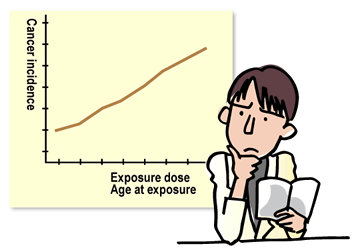
Currently, 30% of Japanese people die of malignant growths from cancer and other diseases. For a sample size of 1,000 Japanese people, this would mean that 300 die. If, for example, 1,000 of these people were exposed to a one time level of 100 mSv, the total would increase to 305 people dying from cancer. This corresponds to the 0.5% described above.
Unfortunately, with current science, it remains impossible to pinpoint which of those five people out of the 305 sustained cancer because of radiation exposure. Determining whether the increased cancer risk was caused by radiation exposure requires demonstrating the causal relationship between radiation exposure and cancer through group surveys. This, in turn, requires methods of demonstrably proving that relationship.
Specifically, by accurately assessing the relationship of, as on a graph, the incidence of cancer (what would correspond to the Y axis) and the amount of radiation exposure, age at the time of exposure, et cetera (what would correspond to the X axis), one can investigate whether there was a causal relationship between the two groups of factors. For example, after the Chernobyl accident, children between the ages of 0 and 5 at that time, who have greater sensitivity to radiation exposure, showed a greater incidence of thyroid cancer; the relationship of the two was therefore scientifically demonstrated.
Postscript
Since the Great East Japan Earthquake and the Fukushima Daiichi nuclear power plant accident of March 11th, 2011, I have been acting as a Fukushima Radiation Health Risk Management Advisor, delivering lectures to the inhabitants of Fukushima Prefecture on the topic of radiation and health. Following a request that I received to publish a series of Q&A articles on radiation and health from the local Fukushima newspaper Fukushima Minpo, I found as many as 150 articles published from December of 2011 to October of 2013.
This new booklet contains a selection of the published Q&A articles after translating the content into English and making slight revisions for clarity. I hope that this booklet will help people understand the gravity of the current situation in Fukushima, thus facilitating the development of a system that would allow people around the world to provide much needed support for the restoration of Fukushima.
To conclude, I would like to thank those who provided us with their help and support in the publication of this booklet, including the Ministry of the Environment, the Nuclear Safety Research Association, and those who kindly assisted in the serialization of the Q&A articles on Fukushima Minpo and the development of this booklet. I would also like to extend my gratitude to the staff from the Department of Global Health, Medicine and Welfare at the Atomic Bomb Disease Institute of Nagasaki University for their incredible support.
March 2016
Noboru Takamura
Professor
Nagasaki University
Noboru Takamura's brief personal history
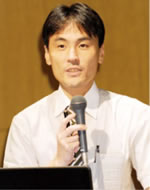
Noboru Takamura, M.D., Ph.D.
Date of Birth: July 11, 1968
Specialty: Radiation Health Sciences, Hygiene, Molecular Epidemiology, Endocrinology, Internal Medicine
学歴・職歴
| March 1993 | Graduate at Nagasaki University School of Medicine |
|---|---|
| June 1997 ~ October 2001 | Assistant Professor, Department of International Health and Radiation Research, Atomic Bomb Disease Institute, Nagasaki University School of Medicine |
| September 1999 ~ July 2000 | Technical Officer, World Health Organization |
| November 2002 ~ | Associate Professor, Department of Preventive Medicine and Health Promotion, Nagasaki University School of Medicine |
| March 2003 ~ | Associate Professor, Department of Public Health, Nagasaki University Graduate School of Biomedical Sciences |
| April 2008 ~ | Professor, Department of Radiation Epidemiology, Atomic Bomb Disease Institute, Nagasaki University |
| January 2010 ~ September 2010 | Technical Officer, World Health Organization |
Society membership
The Japan Endocrine Society, The Japan Radiation Research Society, Japanese Society of Hygiene
Honorary professorships
Honorary Professor, Gomel State Medical University (Gomel, Belarus) and Honorary Doctor, Belarussian State Medical University (Minsk, Belarus)
Social activities
Advisor on radiation health risk control of Fukushima Prefecture
